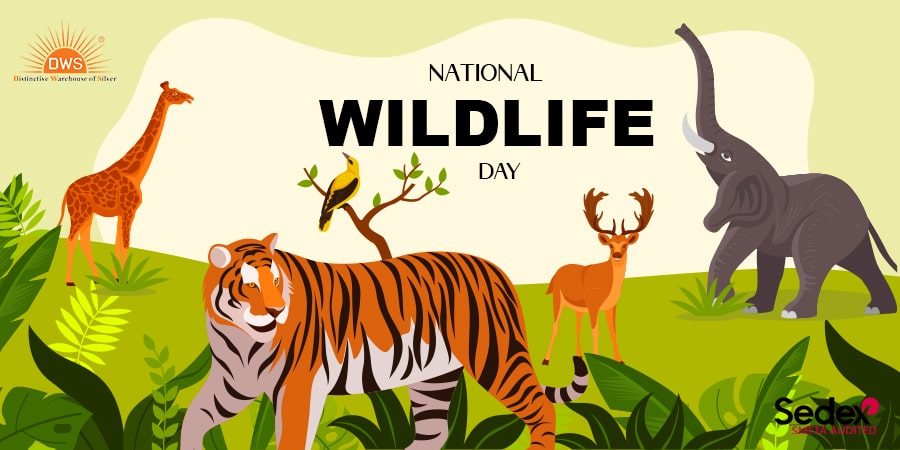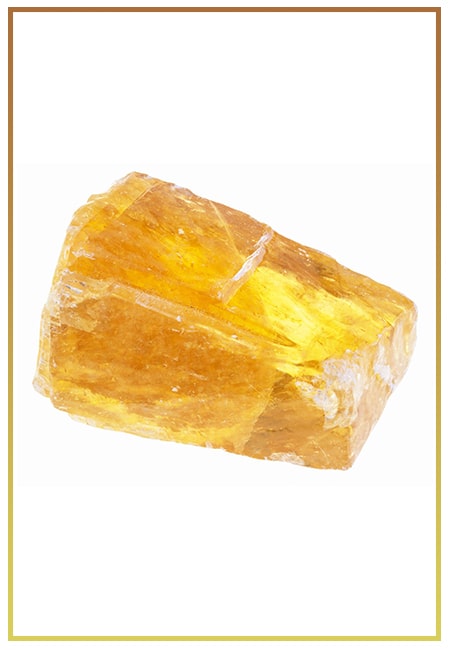- Written By Team DWS
- Festivals
- August 01, 2025
National Wildlife Day: Celebrating and Conserving Our Precious Wildlife
Every year, people around the world come together to observe special days dedicated to the protection and celebration of nature and its magnificent creatures. Among these celebrations, National Wildlife Day holds a unique place as a day devoted to acknowledging the intrinsic value of wildlife and raising awareness about the urgent need to protect endangered species and their habitats. Whether it’s the majestic tiger prowling the forests, the delicate monarch butterfly fluttering over meadows, or the mysterious deep-sea creatures of the oceans, wildlife enriches our planet with biodiversity, culture, and inspiration.
In this blog, we explore the origins, purpose, and significance of National Wildlife Day, the threats facing wildlife today, the role of conservation, inspiring success stories, and how you—yes, you—can make a difference in preserving the wonders of wildlife for generations to come.

What is National Wildlife Day?
National Wildlife Day is an annual observance celebrated to acknowledge, honor, and raise awareness about the importance of wildlife and the challenges they face in the modern world. It encourages people worldwide to reflect on the value of wildlife species—not just animals, but plants and ecosystems—and to take action toward their preservation.
While different countries recognize various wildlife-related days (such as World Wildlife Day on March 3 recognized by the United Nations), National Wildlife Day in the United States is observed on September 4th each year. This date was chosen to emphasize the plight of endangered and threatened animals, promote education about wildlife habitats, and inspire conservation activities at the grassroots level.
The Origins and Purpose of National Wildlife Day
National Wildlife Day was founded by a wildlife advocate and author to create an annual platform that could shine a spotlight on endangered species and vulnerable ecosystems, some of which might otherwise go unnoticed in the media and public consciousness. The day serves several key purposes:
- Educating the Public: Many people don’t realize how fragile animal populations are or how human activities continue to impact wildlife negatively. The day fosters education on biodiversity, species endangerment, and ecological balance.
- Promoting Conservation Efforts: It encourages support for wildlife sanctuaries, wildlife rehabilitation centers, and anti-poaching campaigns while urging governments to implement and enforce protective legislation.
- Celebrating Biodiversity: Humans are part of an interconnected web of life. National Wildlife Day celebrates that connection, encouraging deeper respect for all living organisms.
Why Wildlife Matters: The Ecological and Cultural Importance
Wildlife forms the foundation of healthy ecosystems and plays numerous vital roles:
1. Ecological Balance
Wild animals, plants, insects, and microorganisms maintain the balance of ecosystems. Predators regulate prey populations, pollinators enable the reproduction of flowering plants, and decomposers recycle nutrients back into the soil. Disrupting this balance can lead to ecosystem collapse, which ultimately affects human well-being.
2. Biodiversity and Genetic Diversity
Every species carries unique genetic material that can be important for things like medicine, agriculture, and biotechnology. High biodiversity improves ecosystem resilience against changes such as climate shifts or disease outbreaks.
3. Cultural and Spiritual Significance
For centuries, wildlife has inspired art, literature, folklore, and religious beliefs across cultures. Many indigenous communities have deep spiritual connections to their local fauna and flora, valuing them as sacred and integral.
4. Economic Contributions
Wildlife supports tourism industries, provides sources for sustainable hunting and fishing, and contributes to agriculture through pollination and pest control. Loss of wildlife can cause economic harm, especially in rural and indigenous communities dependent on natural resources.
The Major Threats Facing Wildlife Today
Despite their importance, wildlife populations worldwide are under unprecedented pressure from multiple threats largely driven by human actions.
1. Habitat Loss and Fragmentation
Deforestation, urban sprawl, agriculture, and infrastructure development fragment and destroy natural habitats. This leaves animals with limited space to roam, find food, and reproduce, leading to population declines.
2. Poaching and Illegal Wildlife Trade
Many species are hunted illegally for their fur, tusks, horns, bones, or as exotic pets. This not only diminishes population numbers but threatens the survival of entire species, such as rhinos and elephants.
3. Pollution
Chemical pollution, plastic waste, and oil spills contaminate ecosystems. Aquatic wildlife is particularly vulnerable to toxins that bioaccumulate and cause reproductive and developmental problems.
4. Climate Change
Changes in temperature, precipitation, and the frequency of extreme weather events disrupt migration patterns, breeding seasons, and food availability. Species that cannot adapt or migrate fast enough face extinction risks.
5. Invasive Species
Non-native species introduced into an ecosystem can outcompete, prey upon, or introduce diseases to native wildlife, often leading to drastic reductions in native species populations.
Inspiring Wildlife Conservation Success Stories
Despite these daunting challenges, there are numerous heartening stories of wildlife conservation success thanks to dedicated efforts from governments, NGOs, scientists, and local communities.
1. The American Bald Eagle
Once on the brink of extinction due to habitat loss and pesticides like DDT, concerted conservation efforts including legal protection, banning harmful chemicals, and habitat restoration have led to the remarkable recovery of the bald eagle population. It was removed from the U.S. Endangered Species list in 2007.
2. Giant Panda Recovery
China’s iconic giant panda was classified as “endangered” but thanks to stringent habitat protection, anti-poaching laws, and breeding programs, its status was upgraded to “vulnerable” in recent years, signaling steady population growth.
3. Marine Turtle Conservation
Worldwide, initiatives to protect nesting sites, reduce bycatch, and combat illegal trade have shown positive results in many sea turtle populations, ensuring these ancient mariners continue to grace our oceans.
4. Community-Led Conservation in Africa
Programs involving local communities in lion and elephant protection efforts through sustainable tourism and education have revived numbers in certain regions, proving that empowered populations can coexist harmoniously with wildlife.
How You Can Celebrate National Wildlife Day and Make a Difference
Wildlife protection starts with awareness, but it flourishes through active participation. Here are meaningful ways individuals can contribute:
1. Educate Yourself and Others
Read about endangered species and their habitats, watch documentaries, and participate in webinars. Share your knowledge on social media or in your community to spread awareness.
2. Support Conservation Organizations
Donate to or volunteer with reputable wildlife charities, sanctuaries, and rehabilitation centers. Your time or money can directly improve the lives of animals.
3. Adopt Sustainable Practices
Reduce your carbon footprint by conserving energy, using eco-friendly products, and avoiding single-use plastics. Opt for sustainable seafood and products certified as wildlife-friendly.
4. Participate in Citizen Science
Contribute to wildlife monitoring through apps and programs tracking bird migrations, butterfly populations, or local biodiversity.
5. Avoid Supporting Illegal Wildlife Trade
Never purchase products made from endangered species or exotic pets captured illegally. Encourage others to do the same.
6. Create Wildlife-Friendly Spaces
If you have a garden or balcony, plant native species and create habitats that support pollinators, birds, and small mammals.
National Wildlife Day Around the World: Global Context & Related Observances
While National Wildlife Day on September 4th focuses on raising awareness in the U.S., conservation is a global concern. Complementary observances include:
- World Wildlife Day (March 3): Established by the UN, it celebrates and raises awareness of the world’s wild fauna and flora, highlighting topics each year—such as endangered species or marine life.
- Earth Day (April 22): Broader in scope but includes wildlife protection as a key theme in ecological conversations.
- International Tiger Day (July 29): Focuses on saving wild tiger populations and habitats.
- Endangered Species Day (Third Friday in May): Dedicated to highlighting endangered plants and animals and what can be done to save them.
Together, these days reinforce the global efforts needed to conserve nature’s treasures.
The Future of Wildlife Conservation: Challenges and Opportunities
Despite progress, wildlife faces an uphill battle in the 21st century, but emerging technologies and growing public awareness offer new hope.
Harnessing Technology
- Remote Sensing and Drones: Used for monitoring habitats and tracking poachers.
- Genetic Research: Advances in DNA analysis help understand populations and fight trafficking.
- Artificial Intelligence: Assists in data analysis and predictive modeling to guide conservation strategies.
Community Involvement
Engaging indigenous peoples and local communities as stewards of wildlife leads to more sustainable outcomes and respect for traditional knowledge.
Education and Youth Engagement
Schools and universities increasingly integrate conservation into curricula, fostering a generation motivated to champion wildlife protection.

Conclusion: Embrace National Wildlife Day with Purpose
National Wildlife Day is more than a date on the calendar—it is a call to action and a celebration of the biodiversity that sustains our planet’s health and humanity’s future. Every wild creature, no matter how big or small, plays a role in the delicate web of life. By honoring wildlife and committing to its conservation, we safeguard natural heritage, enrich our lives, and honor the legacy we leave for future generations.
This September 4th, join hands with millions across the world to make National Wildlife Day impactful. Teach others, support conservation projects, choose sustainable living, and most importantly—cherish the wild wonders around you.
Together, we can create a world where wildlife thrives in harmony with human progress.
If you'd like, I can also help you craft related social media posts or informational resources to complement this blog. Just let me know!
Popular on Blogs

Black Tourmaline: Meaning, Healing Properties, Fascinating Facts, Powerful Attributes, Versatile Uses, and Beyond
September 05, 2023 / BY Team DWS
Black Tourmaline, also known as Schorl, is a highly revered crystal with incredible metaphysical properties. It derives its name from the Dutch word "turamali," meaning "stone with ..

Carnelian Stone: Meaning, Healing Properties, Power, Facts, Color, Uses and More
December 26, 2023 / BY Team DWS
Carnelian is a vibrant and captivating gemstone that holds a plethora of meanings, healing properties, and powers. Its warm and fiery energy makes it a popular choice among crystal ..

Citrine: Exploring its Meaning, Healing Properties, Fascinating Facts, Powers, Versatile Uses, and Much More
November 18, 2023 / BY Team DWS
Citrine, with its warm golden hues, has captured the attention and imagination of people for centuries. This beautiful gemstone, commonly associated with wealth and prosperity, hol ..

Black Onyx: Unveiling the Meaning, Healing Properties, Fascinating Facts, Powerful Attributes, Versatile Uses, and Beyond
July 25, 2023 / BY Team DWS
Black Onyx, a striking gemstone admired for its deep black hue and elegant appearance, has captivated people for centuries. In this comprehensive guide, we will delve into the mean ..

Unveiling the Mysteries of Turquoise Stone: Exploring its Meaning, Healing Properties, Power, Facts, Color, Uses, and More
December 05, 2023 / BY Team DWS
Turquoise, with its captivating blue-green hue, has been adorning jewelry and artifacts for centuries. This striking stone has a rich history, rich symbolism, and a plethora of int ..

The History Behind The Popularity of Red Agate
December 23, 2022 / BY Team DWS
An Agate is a type of magma rock that takes many years till it is washed out naturally into the water. And that is the reason this stone has elements of water. This beautiful stone ..

Bloodstone: Unveiling the Meaning, Healing Properties, Facts, Powers, Uses, and More
August 21, 2023 / BY Team DWS
Bloodstone, with its captivating deep green color with specks of red, is a mesmerizing gemstone that has fascinated civilizations for centuries. It possesses unique healing propert ..

Plan a Perfect Valentine's Week with Our Valentine Week List 2025
January 22, 2024 / BY Team DWS
Valentine's Day is undoubtedly the most romantic day of the year, but we believe that one day is just not enough to express your love and make your partner feel special. That's why ..


